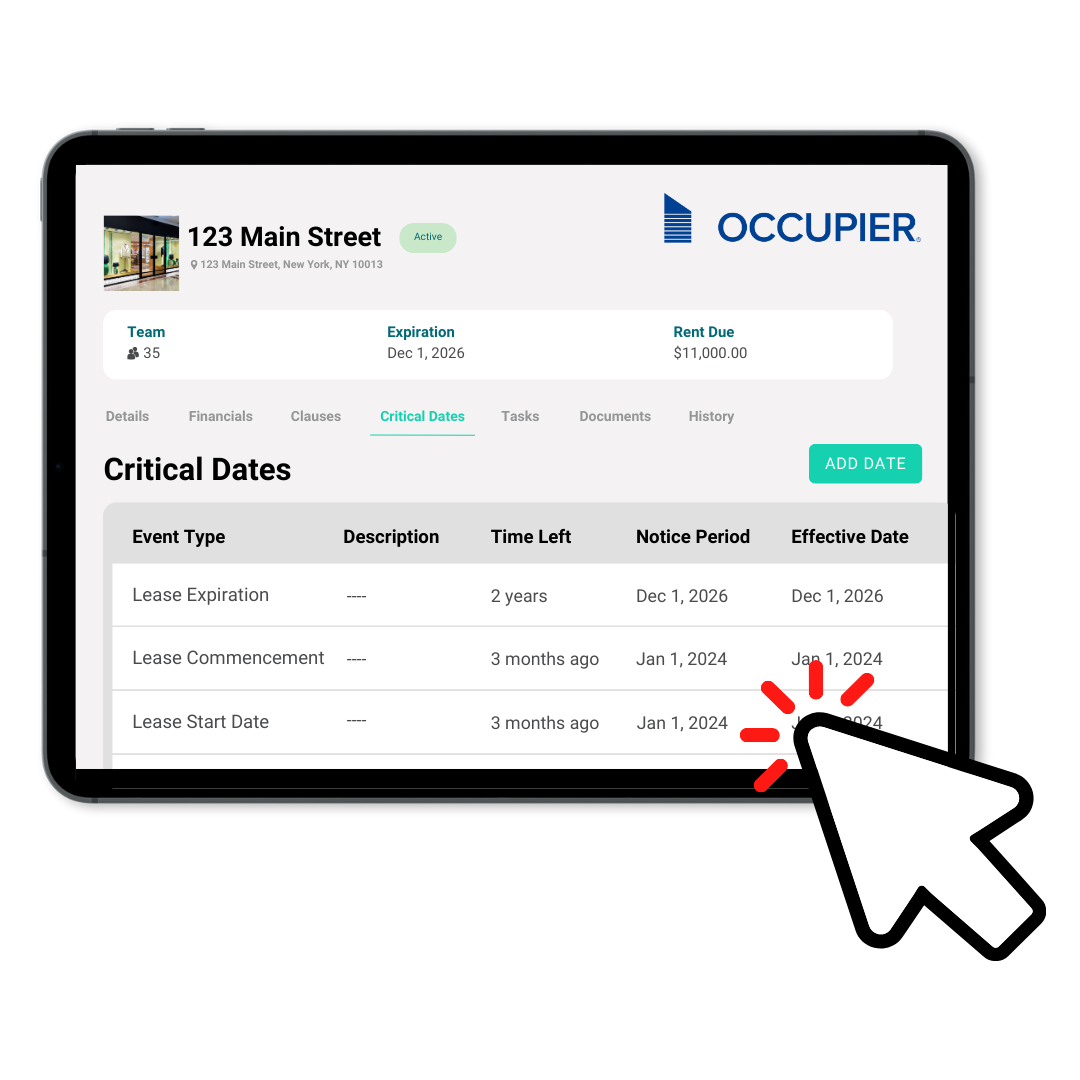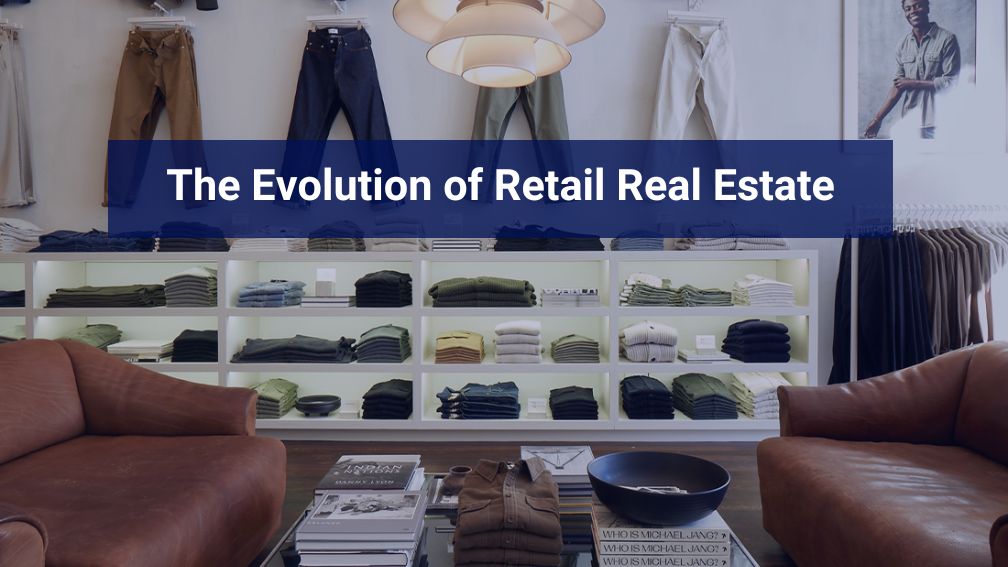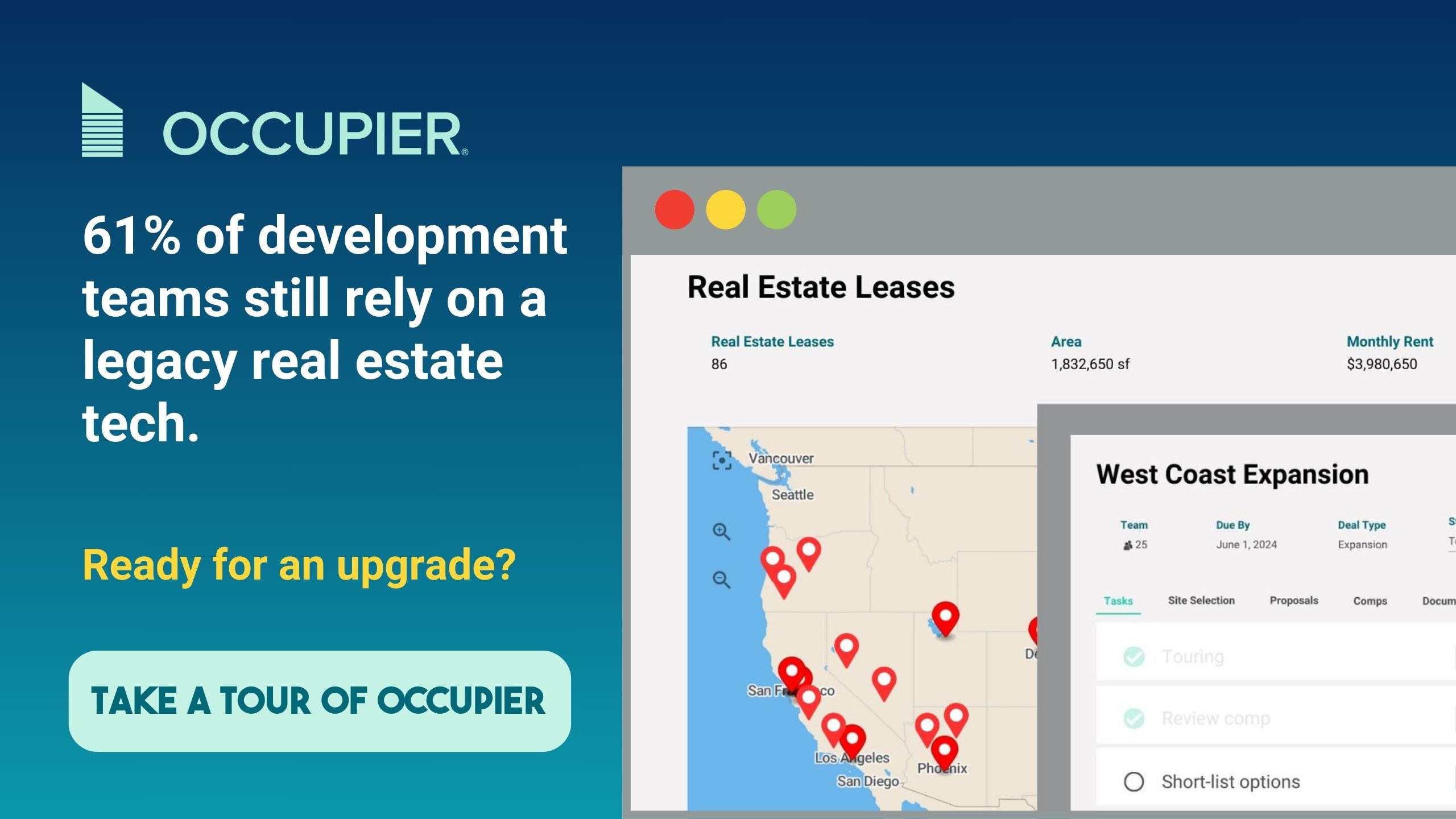The Evolution of the Retail Real Estate Market
Last Updated on April 4, 2024 by Morgan Beard
Among the uncertainty of economic turbulence, not far removed from a global pandemic, one branch of real estate in particular has both survived and thrived. Which area of commercial real estate has experienced the most growth and innovation? The answer might be surprising to many: retail real estate.
Understanding how the pandemic has revealed the resiliency of this segment will help businesses determine what retail real estate strategies they need to consider and how to approach their physical real estate so that they continue on positive upward trajectories.
Retail Real Estate Is Growing Because of Societal Shifts
Make no mistake: Retail is growing. If anything, 2022 showed the consumer economy’s worldwide resilience and momentum. Global retail sales in 2022 were poised to grow 5% year over year and exceed $27.33 trillion. In the U.S., retail sales in May 2022 alone increased 10.5% year-over-year and were up 21.4% compared to May 2019. Much of these gains can be traced directly to in-store sales.
People are generally surprised by how well physical brick-and-mortar retail locations are thriving. With the dual threats of e-commerce and COVID-19 restrictions, many thought that retail stores would fade away. There are two main reasons this has not happened: a reshaped society and the resultant need for connection.
The pandemic redefined community and the workplace. When offices shut down in 2020, there was a turn toward remote work. With many employers now mandating some level of employee attendance again, there will continue to be offices, but they likely won’t look the same.
Making More Personalized Customer Connections
There has been a push toward more flexible work environments and remote work that looks poised to continue. Occupier’s users, on average, have seen a 6.03% increase in their lease portfolio, with the average tenant up to 42 separate leases. There is a marked trend toward a more flexible and decentralized work environment that is not only distributing the workforce, but also leading to expansion opportunities in areas that previously had smaller population densities and consumer bases to support products and services. However, there has been a not-so-hidden cost to this drastic reshaping: a loss of community.
Many emerged from the pandemic era with a renewed appreciation for person-to-person connections. After a long period of isolation, consumers crave new experiences. Many people are looking for a sense of community in new places, and one such place is retail. They are demanding that retailers supply interesting and entertaining shopping experiences that look much different than the shopping experiences everyone used to know. Consumers have rewarded businesses that have listened to that need. However, those necessary expansions — both in business operations and real estate — are costly. Retailers are correct to carefully consider the macro environments they’re operating in.
Business leaders are looking outward and mulling their next moves. In the United States, inflation rose significantly in 2022, and the Federal Reserve has raised interest rates aggressively; as we kick start 2024, signs of inflation cooling are strong and consumer demand for retail and restaurant spending is high.
49% of retailers have a brick & mortar expansion roadmap outlined for the next five years. Yet 61% the real estate and development departments have admitted that they are relying on a outdated, legacy tech stack for lease management.
Take a Self-Guide Tour of Occupier
Retailers Should Be Confident About Expansion
Brick & mortar etailers have plenty of options to draw in consumers and capture their loyalty. Customers have been vocal about their needs to connect, and brands that are meeting those needs are being rewarded. E-commerce brands such as Warby Parker, Brooklinen, and Glossier have been expanding with innovative spaces and offerings, while brands with traditional physical brick-and-mortar retail locations such as Bed Bath & Beyond and Kohl’s have contracted their spaces.
Retail real estate has been a bright spot. With retail real estate demand experiencing positive gains for seven straight quarters. Though retailers shouldn’t count on such positive trends in all situations, there is a long way for the demand to fall before any panic sets in. Given that, retailers should not rest on their laurels but study strategies that have worked for others to maximize their upsides and also give themselves downside protection.
Connections & Convenience Are Key
At the core, businesses that have succeeded have fulfilled a need for connection and convenience. That need stems from the pent-up demand that was generated during the pandemic. As peoples’ offices increasingly shift to their homes, those small interactions that co-workers had in office settings are absent in their lives. Businesses that are providing that connection for consumers are thriving.
There’s a compelling argument to be made that the pandemic didn’t create a need for connection — it just revealed or amplified a trend that already existed. That said, several strategies are particularly helpful when trying to establish stronger relationships with target retail audiences and casual purchasers alike, including:
1. Leverage an Omnichannel Retail Strategy:
Many brands are switching to omni-channel retail strategies to meet their customers’ demands. This approach allows consumers to have fully integrated experiences across each of a store’s sales channels, including e-commerce, physical brick-and-mortar locations, and mobile apps.
The Starbucks Rewards app is an example of a brand integrating its whole experience into an omni-channel retail real estate strategy. Customers can use a mobile app that allows them to order remotely and pick up in the store also while earning loyalty points and integrating with all the company’s systems. Amazon Style is another great example, as customers can use their smartphones to scan QR codes of products in stores and instantly get access to available sizes and reviews — pulling in all other customer experiences to make the best decisions possible.
2. Going from Online to Real-Life Expansion:
Warby Parker, as discussed previously, expanded its offerings from solely digital to include physical brick-and-mortar retail locations as well. While customers can still order their eyeglasses online and shop the styles they want, they can also go into a Warby Parker store and receive an eye exam — eliminating the need for outside vendors or the hassle of obtaining a prescription before moving into the company’s online system.
3. Improving the Client Experience:
Brands that have focused on improving the overall client experience and reducing friction points have done well. Amazon and Bonobos are two examples, though the brands deployed different strategies to meet this need.
Amazon developed its Just Walk Out technology that allows customers to make quick selections and check out via their smartphones without having to stop at the cash register. Airport hotspot Hudson News has integrated this to benefit customers who are in a hurry to catch their flights and don’t have time to wait in line. Retailers get the benefit of less staff needed for checkout, as well as effective inventory control and data about staffing needs. In this way, both the customer and retailer are getting effective, efficient data.
Meanwhile, Bonobos has experimented with multiple strategies, including its Guideshop offerings. In the Guideshops, Bonobos has teams available to measure fit and advise customers about different style combinations. The focus is on providing consultation to clients and giving them ideas they might not otherwise have. Bonobos also has worked on a zero-inventory model where it offers a limited selection and customers have orders fulfilled online. Each shopper gets the benefit of a consultative experience, and the retailer gets the benefit of decreased floor space needs and centralized inventory shipping.
4. Understand ‘Retailtainment’:
Brands that are providing entertainment to customers are being rewarded for their efforts. Tiffany & Co., for instance, serves breakfast at its 5th Avenue flagship location in Manhattan, which provides a way for consumers to get a taste (pun intended) of the brand.
Craft store chain Michaels uses divisions of its physical spaces to give guidance to crafters who want to learn new techniques or just have an evening out with friends. These two brands understand that meeting customers’ needs for connection and providing experiences are critical components of their identities.
Modeling these proven strategies from dynamic brands and tweaking them should provide retail businesses with a strong framework in which to bolster their offerings for a demanding public.
Retailers Who Know Their Audiences Will Thrive
Retailers need to align their stakeholders across all departments — marketing, operations, finance, real estate, legal, etc. — and make sure their site selections are surgically precise. These domains all feed into one another, and ignoring how the business affects the real estate (and vice versa) can cause diminished performance.
Here are a few ways to better understand your customer base:
Identify Your Target Audience:
Everyone knows that data is important, but in today’s competitive business landscape, it has taken on an outsized significance. Businesses need to collect and study their target market demographics and understand why those people visit stores. That audience is ultimately the driver of your business, and understanding what they need will dictate your physical space.
Do customers need a curbside delivery service? Convenient access and ample parking might become priorities in that scenario. Do customers want consultations? If so, decreasing floor space and allocating resources toward trained staff who can help them could be a strong option.
Create a Branded Experience:
The brand experience is critical in today’s environment. The physical site needs to work in tandem with your brand’s business model. Stores looking to employ Amazon’s Just Walk Out technology, for instance, should ensure they have sufficient need and walkable space, adequate lighting, and easy ingress and egress to allow for fluid foot traffic.
On the other hand, stores looking to emulate the classroom model of Michaels should think about how they can control noise from classes, keep inventory tidy, and respect the habits of other shoppers. Paying careful attention to how these details promote your brand’s mission is crucial.
Explore Valuable Partnerships:
For many, shopping serves as an activity to get together with friends, have lunch, and become immersed in the community. From a real estate perspective, are there other brands that share your target audience that make sense to partner with or open your doors adjacent to?
It’s not uncommon to find a juice chain strategically open up shop next to a yoga studio. Together, they create a full experience for their shared target audience. These types of insights help strengthen your real estate team’s go-to-market strategy as you look to expand your physical footprint.
Automation Allows for Smooth Delivery of Client Satisfaction
The trends powering retail are diverse, but they share a common thread: connection. Building out from there is key, and, as described above, brands need to have strategic planning in place to build out their physical presence. Although the market is rewarding companies with creative and interesting offerings, there are still risks that need to be carefully addressed. Businesses can give themselves advantages by employing a retail real estate tech stack that supports collaboration, automation, and data insights to help manage and mitigate those risks.
“Retailtainment” and innovative offerings are more than just fads — they are the future of retail, and that future has officially arrived. People want more than inventory sitting on shelves; they want to be delighted and amused and have unforgettable experiences. Business leaders need to understand this from the onset of the site-selection process and use an automated, collaborative lease management software system to address those items.
Questions about move-in dates, tenant improvement allowances, utility responsibility, and inventory should not slow down your build-out team.
Here are a few key ways that lease management software helps:
Financial Forecasting:
In an era of economic uncertainty, you need to be aware of any threat to your bottom line. Real estate expense tends to be an organization’s second highest cost after payroll, so you must be mindful of threats such as rent escalation clauses tied to the consumer price index. It’s important to have real-time data available to make sure you are not overreaching and are able to meet your debt service obligations in order to run a profitable operation.
Critical Date Management:
Each lease has dozens of essential dates to manage. In a difficult economic time, it’s vital to monitor important lease dates to ensure you don’t miss expansion opportunities or the potential to vacate a property that no longer meets your business needs. Having a single source of truth available for all members of the organization to proactively review those deadlines is integral for success.
Team Collaboration:
Occupier is the only lease management software solution that empowers the entire lease life cycle — from site selection to critical date management and lease accounting compliance. With economic uncertainty swirling, leaving your data siloed across different teams leaves too much room for error. No business wants to get down the road with a development and find improper zoning, a problem in the chain of title, or inadequate utility coverage for the building’s needs.
Retail real estate will continue to be a source of stability and profitable operations for the foreseeable future. Businesses that carefully consider their customers’ needs and make precise business and real estate decisions — supported by powerful tools like lease management software — will continue to reap those rewards.

Product Tour
Take a self-guided tour and see how the fastest-growing commercial tenants leverage Occupier for lease management & lease accounting.

